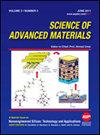Construction of a New Prognostic Model for Oral Squamous Cell Carcinoma Based on Telomere-Related Genes
IF 0.9
4区 材料科学
引用次数: 0
Abstract
We investigated the prognostic value of telomere-related genes in oral squamous cell carcinoma (OSCC) using the TCGA-OSCC dataset and GSE41613 external validation set. We identified differentially expressed genes (DEGs) between OSCC and control samples and intersected them with telomere-related genes. Three risk model genes (IGF2BP2, EIF5A2, and PLOD2) were obtained through Cox and LASSO analyses. A risk model was constructed based on the expression of these genes. The OSCC samples were divided into high and low-risk groups using the median risk score. Univariate and multivariate Cox analyses identified risk score and age as independent prognostic factors. Gene set enrichment analysis revealed enrichment in chemical stimulus and appendage development pathways. We constructed a transcription factor (TF)-mRNA network involving two mRNAs (EIF5A2, PLOD2) and 17 TFs, including STAT1-EIF5A2 and TEAD1-EIF5A2. Immune-infiltration analysis showed significant differences in the abundance of 11 immune cells between the high and low-risk groups, including T cells CD8, activated mast cells, and macrophages M0. Our findings contribute to the development of a telomere-related risk model (including IGF2BP2, EIF5A2, and PLOD2) for predicting the prognosis of OSCC, providing new insights for further studies in this area.基于端粒相关基因的口腔鳞状细胞癌新预后模型的构建
我们使用TCGA-OSCC数据集和GSE41613外部验证集研究了端粒相关基因在口腔鳞状细胞癌(OSCC)中的预后价值。我们鉴定了OSCC和对照样本之间的差异表达基因(DEGs),并将它们与端粒相关基因相交。通过Cox和LASSO分析获得3个风险模型基因(IGF2BP2、EIF5A2和PLOD2)。基于这些基因的表达构建了风险模型。使用中位风险评分将OSCC样本分为高风险组和低风险组。单因素和多因素Cox分析确定风险评分和年龄是独立的预后因素。基因集富集分析显示在化学刺激和附属物发育途径中富集。我们构建了一个转录因子(TF)-mRNA网络,涉及两个mrna (EIF5A2, PLOD2)和17个TF,包括STAT1-EIF5A2和TEAD1-EIF5A2。免疫浸润分析显示,高危组和低危组之间11种免疫细胞的丰度存在显著差异,包括T细胞CD8、活化肥大细胞和巨噬细胞M0。我们的研究结果有助于建立端粒相关风险模型(包括IGF2BP2、EIF5A2和PLOD2)来预测OSCC的预后,为该领域的进一步研究提供新的见解。
本文章由计算机程序翻译,如有差异,请以英文原文为准。
求助全文
约1分钟内获得全文
求助全文
来源期刊

Science of Advanced Materials
NANOSCIENCE & NANOTECHNOLOGY-MATERIALS SCIENCE, MULTIDISCIPLINARY
自引率
11.10%
发文量
98
审稿时长
4.4 months
 求助内容:
求助内容: 应助结果提醒方式:
应助结果提醒方式:


